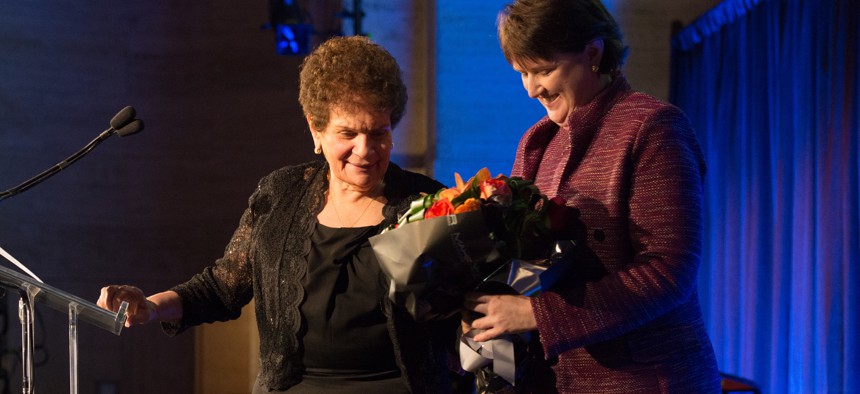Michelle Yanche takes the reins at Good Shepherd Services

Good Shepherd Services
News of Sister Paulette LoMonaco’s retirement as executive director of Good Shepherd Services rocked the local nonprofit world earlier this year. As the organization’s leader for five decades, LoMonaco’s legacy – which was the subject of a New York Times profile – has become synonymous with Good Shepherd Services.
Starting today, the nonprofit – with an annual budget of more than $90 million and services reaching nearly 30,000 people – will be led by Michelle Yanche, who has served as its associate executive director for government and external relations since 2016. NYN Media sat down with Yanche to learn more about her history with the organization and her vision for changing it.
This interview has been edited for clarity and length.
How has Good Shepherd changed since you first joined the organization?
I think Good Shepherd’s journey has been similar to what I would say human services providers overall or child welfare organizations or family providers’ journey has been. There have been some real positive shifts: Now it’s the norm to have programming in public schools during the hours when school is not in session – that’s become the expectation. I even run into people who don’t remember that once upon a time, that was not the case.
I would also say preventive services really becoming the bedrock of the child welfare system, rather than foster care has been a change. I think that one of the challenges has been around the financing of human services – it was much more the case around the time that I started doing this work that government contracts covered real costs of services.
What is it like to take over from Sister Paulette?
On the upside, I’ve worked with Sister Paulette for 26 years and, especially over the past 10 years, I’ve worked very closely with her. The work itself is not what I find most challenging but certainly, hearing at least 10 times a day questions like, “You’re replacing a legend, you have big shoes to fill, are you out of your mind to try and follow Sister Paulette?” can be. You can’t really replace Sister Paulette. I’m following an icon. So I’m trying not to let that be too daunting to my ego.
In all seriousness, Paulette was never a leader who was like, “My way or the highway.” She was always a very collaborative leader, and Good Shepherd was never really all about Paulette. We have a very very strong leadership team and a very strong staff, and so, in reality, it feels like, especially inside the organization, my chair only moved like one place to the right.
What goals and vision do you have for Good Shepherd?
I would say that all of our organizations – I mean all organizations, not just nonprofits, not just human services organizations – need to be really rolling up our sleeves around anti-racism. And that’s work that has very much started under Sister Paulette: Some of the major initiatives underway here at Good Shepherd will always stand as part of her legacy. So for me, accelerating that work and making sure the work continues and moves forward – that is a top priority.
On a more macro scale, we will focus on maintaining Good Shepherd’s organizational strength, the quality of our services, the strength of our infrastructure, the amazing responsiveness and talent of our staff, while knowing that the next couple of years might be hard.
We’re going to be navigating a mayoral transition, and that always represents a potential change for organizations in New York City because so much of our work is impacted by local decisions. Also, I’m certainly not a statistician on the financial side, but everyone who is, says we’re going to be seeing a financial downturn. That always presents challenges for folks that do the work we do, because what you see is a simultaneous increase in the need for the work that we’re doing, while at the same time, the government’s own ability to support us financially to do the work decreases.
Where can the organization improve?
There are always things organizations could be improving upon. I would say that that is also one of our strengths – we are always in a sort of continuous process of improvement. We’ve already talked about some of the areas where we’re really trying to move the needle. We are in the second year of our new strategic plan, which has six strategic directions, one of which is anti-racism and equity, though we would say it’s embedded in all six directions.
We’re also really looking at wages: Advocacy has always been one pillar of our mission that we take very seriously, so not only do we work to provide quality services, but we are always advocating to push systems to better reflect best practices.
In short, we’ve been trying to figure out ways to make equity and wages that are going to allow us to attract and retain quality staff over the long term, but also to push the public systems to invest in our contracts in ways that will allow us to pay our staff in ways that allow us to keep them.
NEXT STORY: How automation can support nonprofits’ missions